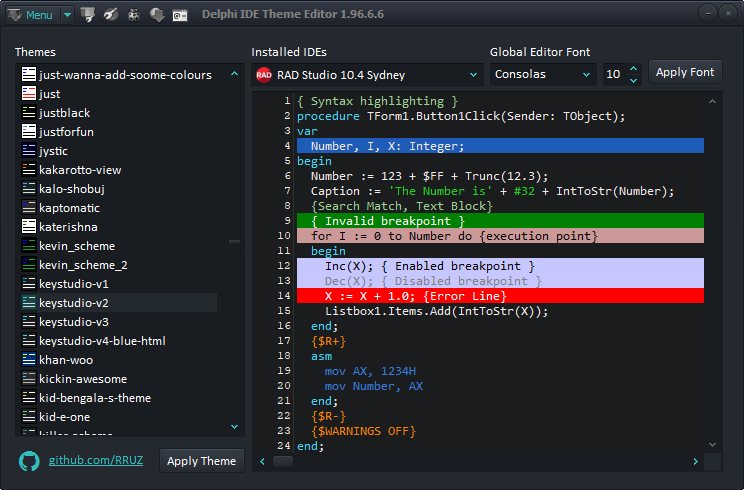
- #DELPHI XE10 UPDATE 1 ANDROID#
- #DELPHI XE10 UPDATE 1 CODE#
- #DELPHI XE10 UPDATE 1 MAC#
- #DELPHI XE10 UPDATE 1 WINDOWS#
If your VCL application modifies the behavior of the OS or other applications through alteration of registry keys, you’re going to have to find out how the same functionality can be achieved on other platforms. If your VCL application depends on configuration in the registry, you’re going to have to migrate it to a file under the configuration directory for other platforms.

ini file or similar name-value pairs file, while another may use a JSON file, and yet another might use an XML file. The ‘/etc’ directory is most commonly used to store configuration files, and, there’s no pre-specified file format. Instead, configuration is usually stored in a specific directory.
#DELPHI XE10 UPDATE 1 WINDOWS#
Though some platforms offer a simulation of the windows registry, the majority of them have no such thing.

If you’ve hard-coded windows paths into your application, then you’re going to have to modify the code, likely using conditional defines, to understand where the same file lies on the other platforms file systems.
#DELPHI XE10 UPDATE 1 MAC#
There is no ‘C:’ drive on an Android, iOS or MAC device.


#DELPHI XE10 UPDATE 1 ANDROID#
What is true is this: Modern versions of Delphi make it possible to write applications for Windows, Mac OSX, Android and iOS. This is not true! It would be some genuine kind of magic if it were true, but it isn’t. This fact has lead to an expectation that Delphi can take your Windows application and somehow, make it cross platform.
#DELPHI XE10 UPDATE 1 CODE#
Modern Delphi is able to compile code to target Windows 32-bit and 64-bit, MAC OSX, Android and iOS. If you have no interest in migrating your code to mobile platforms, or the MAC desktop, go ahead and skip to the section entitled “Windows 64-bit migration” and we’ll pick up from there. If you come across something which is not included, please register and leave a comment, which I may integrate into this page.īefore we begin looking at the common pitfalls of a version migration, I would like to take a moment, (actually, a good page or two,) to discuss an often miss-understood feature of modern Delphi versions. I will also aim to add tips & tricks for the migration process, and links to relevant documentation. I intend this page to become something of a living document, which I will update over time to include any pitfalls that I uncover. This page aims to address the most common pitfalls which may befall a migration from any version of Delphi prior to 2009, including Borland versions, to modern Embarcadero versions. Thankfully, Delphi makes migration over the decades relatively painless, however, this doesn’t mean effortless! Every day, I am asked questions about migration from versions as old as 15-20 years, to the latest edition. A true testament to Delphi is the number of applications out in the wild which were written with much older versions.


 0 kommentar(er)
0 kommentar(er)
